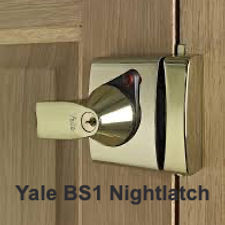ALL LOCK PROBLEMS SOLVED FAST – UPVC DOORS & WINDOWS REPAIRED
BIFOLD DOOR REPAIRS – ALL LOCKSMITH SERVICES





Types of Nightlatches we can supply and fit in Haywards Heath: An Overview of Door Security Options
Nightlatches are a popular type of door lock, commonly used on external wooden doors, especially in the UK. Sometimes referred to as “Yale locks” (due to the brand’s association with the product), nightlatches provide a convenient and secure way to lock doors automatically upon closing. They are mounted on the inside surface of the door and typically engage automatically when the door is shut. Nightlatches come in various styles and security levels to suit different needs. Below is a guide to the main types of nightlatches available for us at The Locksmiths of Haywards Heath.
1. Standard Nightlatches
Standard nightlatches are the most basic form of this lock type. They consist of a latch that is retracted by a knob or handle from the inside and a key-operated rim cylinder from the outside. These nightlatches automatically lock the door when it is closed, which offers convenience and a basic level of security. However, they can be vulnerable to forced entry, especially if the surrounding door structure is weak. These are most suitable for internal doors or as a secondary lock when used in combination with a mortice deadlock.
2. Deadlocking Nightlatches
Deadlocking nightlatches offer an additional layer of security. They feature a mechanism that allows the latch to be “deadlocked” using the key from the outside, preventing it from being retracted even with the internal handle. This function is especially useful at night or when leaving the house for extended periods. The deadlocking feature helps prevent “credit card” attacks or access via the letterbox. However, caution is advised: if someone accidentally deadlocks the door while occupants are inside, it can prevent easy escape in an emergency unless there is a key on the inside.
3. Auto-Deadlocking Nightlatches
Auto-deadlocking nightlatches enhance security by automatically deadlocking the latch bolt when the door is closed. This prevents the bolt from being slipped back using tools or force, providing better protection against burglary techniques. These locks are ideal for main entrance doors and are often designed to meet insurance standards such as British Standard BS3621. Many auto-deadlocking models also feature an internal key operation or override, allowing safe exit from the inside.
4. Double Locking Nightlatches
Double locking nightlatches provide control both inside and outside the door. These have a key-operated function on both sides: the external cylinder unlocks the door as usual, while the internal handle can also be locked with a key to prevent it from turning. This is particularly useful in shared accommodations or commercial premises where internal locking is required for security or privacy.
5. Digital and Smart Nightlatches
With the advent of modern technology, digital and smart nightlatches have entered the market. These locks allow keyless entry through a keypad, app, or biometric verification. Some can be retrofitted to traditional nightlatch bases, combining modern access control with the traditional functionality of a nightlatch. They offer increased convenience and integration with smart home systems but require power sources (batteries or mains).
Conclusion
Nightlatches are versatile and widely used for securing external doors. From standard models to advanced smart options, each type offers different features depending on security needs and usage preferences. Choosing the right nightlatch depends on factors like the type of door, level of risk, and desired convenience. When properly installed and used with complementary locks, nightlatches can be an effective part of a home security system.


